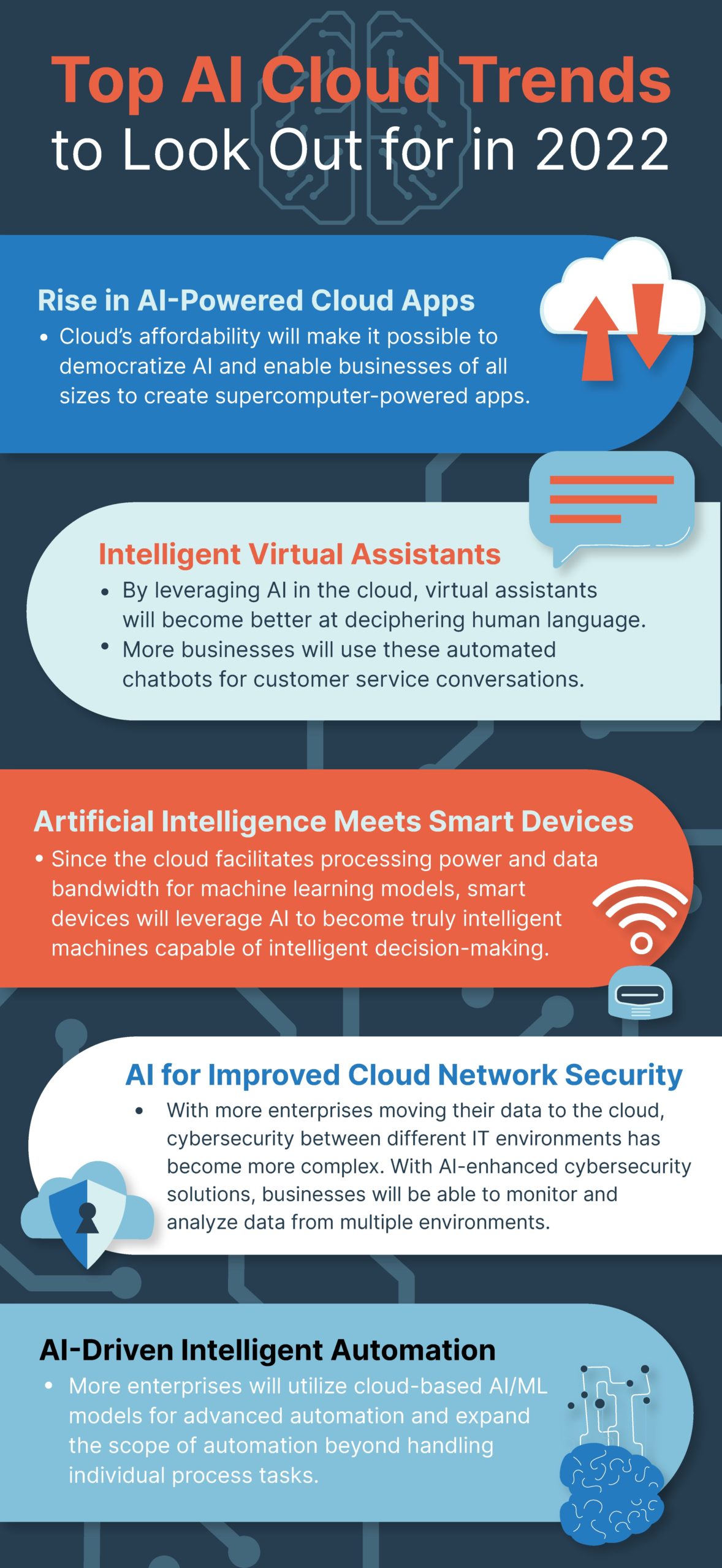Understanding Cloud Agnostic Architecture and Strategies
The constantly expanding public cloud space makes it imperative for businesses to adopt a cloud strategy that supports their key enterprise goals. Most organizations today prefer to work with multiple cloud providers, primarily to prevent vendor lock-ins.
A survey from Gartner shows that as many as 81% of companies use public cloud services from multiple providers. Businesses, therefore, are increasingly focussing on building multi-cloud strategies so that applications developed can consume services from multiple clouds.
However, for a multi-cloud strategy to become successful, cloud agnostic architectures are essential.
What is Cloud Agnostic Architecture?
Cloud’s most significant advantage is its flexibility. The public cloud services, when running out of storage, can automatically scale it for you. However, cloud agnostic architecture takes this flexibility to a different stage.
Cloud agnostic architecture focuses on designing applications, tools, or platforms that can run seamlessly in any cloud environment as they are compatible with any cloud infrastructure. They can also be moved to and from different cloud environments without operational issues.
Organizations can efficiently run their applications and workloads in any public cloud, even while using various cloud services. Generally, organizations have preferences for their cloud setup and have a customized mix of open source tools that work better for different applications or services. While it complicates and increases the risk quotient for application management, it is much better than getting locked in by a single vendor.
Companies can leverage cloud agnostic tools and platforms to ensure that their workflows and applications are secure, scalable, portable, flexible, and benefit from cutting-edge, open source technology that can meet core business needs.
Open Source Cloud Agnostic Strategies
Leading public cloud service providers such as AWS, Microsoft Azure, and Google Cloud Platform are powered by different open source components, such as Java frameworks. These components are further integrated with other open source cloud services, such as Apache and Kubernetes. However, these public clouds are still not fully open source. Most of these companies do not provide access to their source code, setting limitations to the cloud’s extension and customization.
Thus, open source cloud platforms emerged as an alternative for making large-scale improvements and customizations, allowing for building scalable infrastructures such as virtualized data centers and private clouds.
Open source cloud infrastructure can be described as a vendor-agnostic approach to leveraging local hardware, public cloud resources, and open source cloud technologies to set up, manage, and operate a hybrid or multi-cloud environment.
You may utilize several strategies to develop a cloud agnostic architecture for your organizations. Here are a few of the popular ones:
First Automate
With a cloud agnostic strategy, the workload for the DevOps team will grow significantly. Therefore, the automate-first method is the most crucial phase for a cloud-agnostic strategy since the infrastructure should be able to function with minimal manual intervention. A planned CI pipeline can be used to carry out this task.
Infrastructure should be constructed with little to no manual intervention, and a CI pipeline should be available for easy integration and testing. Pipelines for deployment must also facilitate scheduled deployments with approvals. Open source tools such as Spinnaker and Jenkins can assist you with this deployment.
Microservices
Microservices architecture organizes an application as a collection of services broken down into small components, each serving a specific business function and interacting with the others. When applications are split into more manageable microservice parts, they are easier to design and maintain, especially if they are meant to be cloud agnostic.
The microservice architecture enables the delivery of large, sophisticated applications in a timely, frequent, and dependable manner. Moreover, changes or additions to an organization’s technological stack are much easier to implement in a microservices environment. Swarm, Kubernetes, and Prometheus are a few from the pool of open source tools for this strategy.
Containerisation
Containers encapsulate all OS-level dependencies, configuration, runtime, libraries, and applications into a single execution. As a result, containers can be used easily and consistently on any platform without modifying the host environment. With few exceptions, a container can be deployed practically anywhere.
Containerisation, backed by cloud agnostic container orchestration technologies, is your best bet for avoiding vendor lock-in. Open source technologies such as Docker and Kubernetes are popularly used together for the best possible results.
Container Orchestration
Container orchestration is the automation of a large portion of the operational work necessary to run containerized workloads and services. It encompasses a wide range of tasks required by software teams to manage the lifetime of a container, such as provisioning, deployment, scaling (up and down), networking, load balancing, and more.
Infrastructure as Code (IaC)
The most straightforward approach is to run your containerized workloads on a cloud-independent container orchestration platform. Many platforms are available for cloud orchestration, such as Docker Swarm and Hashicorp Nomad, with Kubernetes being the most popular.
With the main purpose of being cloud agnostic, the primary challenge is to meet the vendor-specific requirements for your applications. Various third-party technologies come into play here to help you define the Infrastructure as Code (IaC). Hashicorp Terraform, Cloud Foundry BOSH, and Red Hat Ansible are some of the technologies that can assist you with this process.
Is Cloud Agnosticism Right for Your Business?
The multi-cloud environment is too good of a perk to refuse. Avoiding vendor lock-in, negotiating price leverage, and best-of-breed capabilities, the opportunity to mix, match, and combine the best possibilities is a reality. Although this approach is complex to implement–with the right strategy and concrete choices–a multi-cloud strategy could be a critical point of transformation for your company.
At GoDgtl, we work with organizations to rethink their business models and practices and help in implementing advanced technology systems and services to achieve digital transformation goals and support their business goals.
Get in touch with us to learn more about our capabilities.
Recent Posts
In the current business world, data is the most valuable asset, and a disaster involving data loss results in several irreversible damages to an enterprise. Those damages include the loss of revenue, productivity, reputation, and even loyal customers. Disasters and their severity are hard to predict. Anyway, you can control how you respond to a disaster, and your response determines how successful your enterprise will recover from it.
The adoption of cloud computing services has been rising since the COVID-19 pandemic. A recent survey revealed that 67% of enterprises adopted cloud infrastructure by the end of 2021. Cloud computing services deliver on-demand Information Technology (IT) services from storage to applications to processing power via the internet on a pay-as-you-go basis. An enterprise can access all those IT assets by paying a fee rather than owning IT infrastructure or data centers.
Here, let’s take a look at Cloud Disaster Recovery (CDR) and how you can use it to your advantage.
Cloud Disaster Recovery: What is It?
CDR is a cloud-based service that quickly recovers your enterprise’s critical systems after a disaster and gives you remote access to your IT resources in a highly secure virtual ecosystem.
Conventional disaster recovery involves managing a secondary data center, a time-consuming yet expensive process. However, cloud disaster recovery has transformed the status quo by eliminating the need for traditional IT infrastructure and bringing down downtime significantly. According to the 2021 Data Protection Report by Veeam, the average downtime cost is roughly $85,000 per hour. And, the cost entirely depends on the size of the business organization – the larger the size, the larger the cost, and vice versa.
The Working of Cloud Disaster Recovery Explained
To understand the working of cloud disaster recovery, we should compare it with conventional disaster recovery. As mentioned earlier, the crucial element of conventional disaster recovery is a secondary data center where you can store all redundant copies of critical data and to which you can fail over workloads.
A conventional on-premises disaster recovery system generally includes the elements mentioned below.
- A dedicated ecosystem facilitates IT infrastructure, including maintenance, employees, and computing devices.
- Adequate server capacity for higher levels of operational performance that also allow scalability depending on the business needs.
- Internet connectivity with ample bandwidth allows remote access to the secondary data centers.
- IT network infrastructure, including firewalls, routers, and switches, are implemented to provide data availability and a reliable link between the primary and secondary data centers.
 Conventional disaster recovery is often too complex to manage and monitor. More than that, maintenance and support of a physical on-premises DR site can be costly and time-consuming. For example, the expansion of the server capacity of an on-premises data center can only be done by purchasing additional computing devices and IT resources, which demands a lot of money, time, and effort.
Conventional disaster recovery is often too complex to manage and monitor. More than that, maintenance and support of a physical on-premises DR site can be costly and time-consuming. For example, the expansion of the server capacity of an on-premises data center can only be done by purchasing additional computing devices and IT resources, which demands a lot of money, time, and effort.
The Advantages of Cloud Disaster Recovery
Cloud disaster recovery can effectively deal with most issues of conventional disaster recovery. Some of the advantages of CDR are mentioned below.
- Eliminates the need for a secondary on-premises physical site and the purchasing of additional hardware and software to carry out critical operations.
- Scalability of IT resources per the business needs
- The affordable pay-as-you-go pricing model requires you to pay only for the cloud computing services you use.
- CDR can be performed in minutes from anywhere in the world over any computing device connected to the internet.
- The backup of data across multiple geographical locations eliminates the possibility of a single point of failure. Even if one cloud-based data center fails, you can still retrieve a backup copy of your critical data.
- Cloud-based state-of-the-art IT network infrastructure ensures that the cloud services provider quickly identifies and rectifies any issues or errors. Moreover, the cloud service provider provides 24/7 support and maintenance of the cloud storage and consistent updating of hardware, software, and cybersecurity features.

Disaster recovery in the cloud is increasingly becoming a popular choice for small and medium-scale businesses looking to implement a robust business continuity strategy. With CDR, setting up a separate data center for backup is no longer required. Moreover, there is no need to install and maintain separate DR tools, which brings down costs while providing businesses access to continuous, scalable DR services.
Recent Posts
May, 2022
The digital revolution in healthcare is faster than ever, making public health all the more inclusive, efficient and sustainable. Healthcare organizations are embracing new, data-centric technologies to handle the constant strain on global healthcare systems due to several factors. Healthcare data amounts to almost 30% of the world’s total data volume, while the compound annual growth rate of healthcare data is projected to reach 36% by 2025. That’s 10% more than financial services, 6% higher than manufacturing and 11% faster than media & entertainment.
Data-driven healthcare and cloud solutions are helping healthcare professionals lower costs, provide better care and improve satisfaction. These technologies make it easier for hospitals to align business outcomes with patient outcomes by stimulating processes as well as operational efficiency. Life Sciences and pharmaceuticals have previously relied on experimental observation and costly clinical trials. Recent developments in data sciences have allowed researchers to streamline complex studies. With increasing bandwidth, networking capabilities, and processing power, healthcare information systems are improving with no end in sight. Read more to find out how data and cloud services have increased the scope of impact that quality healthcare has on our lives.
How Data and Cloud Computing Enhance Healthcare Services
Big Data Analytics
Big data is massive amounts of information generated from different sources, stored and analyzed to derive a simpler, more practical truth from the larger picture. Big data has been previously associated with supercomputers, nuclear physics and defense simulations.
Cloud-based solutions like Microsoft Azure can process datasets that are otherwise too large or complex for traditional database systems. As a result, this derivation serves as meaningful information for researchers, patients, doctors, and administrators. For example, healthcare organizations can leverage big data to predict and prepare for a future health crisis.
Big data allows healthcare professionals to drill down and know more about their patients and the effectiveness of the care they provide. Since doctors can identify and draw early warning signs, it becomes possible for them to treat diseases in the early stages. In addition, hospitals can use underutilized health records by merging data from clinics, other healthcare institutes and public health records.
Cloud Transformation
Organizations with bigger employee populations are turning to cloud healthcare solution providers to enable more affordable yet high-quality healthcare services. Cloud provides them with the flexibility, scalability and security needed to keep up with the exponential medical and digital technology advancements.
Leading healthcare organizations have already initiated value-generating cloud transformations that bring various benefits to practitioners and patients alike. Cloud-based solutions help healthcare professionals deal with the ever-increasing operational and infrastructural costs, government compliances, and security concerns. With remote storage, hospitals can access a network of servers where they can safely store large volumes of data.
Cloud offers the amount of interoperability required for advanced healthcare applications such as collaborative patient care, IoT-based devices and quality virtual treatments. For instance, Google Cloud Platform’s (GCP) healthcare data engine makes data immediately useful by providing an interoperable, longitudinal patient data record.
Pharmaceuticals and Research
Data analytics can ensure that the right patient has the right medicine at the right time. Pharmaceutical and research organizations can utilize data to understand diseases better, their progression and prevention and create safer, targeted treatments with minimal adverse events.
Predictive modeling enabled by large datasets can help determine more efficient medications and development processes. More accurate therapy trials with medicines for specific categories of the population or individuals are possible through advanced statistical analysis and better study designs. Big data applied in biomedical research can help us gain novel insights on a granular scale.
This can help with developments in personalized medication and enable a more individualized approach to healthcare. Leading industries in biomedical sciences have leveraged Amazon Web Services (AWS) cloud platform for almost a decade to do more with their data.
Transform to Digital to Let Data Transform You
Today, digital transformation is not merely adopting a bunch of feature-rich software and getting your data online. There are several digital technologies and cloud-based applications to choose from. However, businesses need to go by a proven methodology and incorporate only the right solutions to reach the highest level of efficiency.
GoDgtl has partnered with the industry’s leading cloud platforms to provide healthcare organizations with the full benefits of the modern data landscape. We can help you evaluate the most suitable cloud platform and set up optimal agile processes along with robust security measures across the enterprise.
Recent Posts
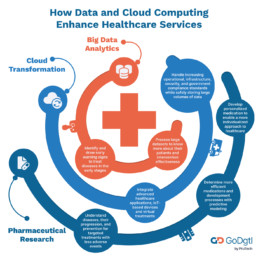
April, 2022
Every year, there is a rise in the number of businesses moving the cloud. At the same time, the number of cyberattacks is also on the rise. A 2021 survey shows that in 12 months, the average cost of compromised cloud accounts reached $6.2 million. As the number of devices and access to the new technology grows, most organizations find it challenging to monitor them, leaving them prone to cyberattacks.
Although cloud vendors invest heavily to secure their products, ensuring security and compliance is a shared responsibility between the cloud service provider and the customer. The Shared Responsibility Model is one such security framework that dictates the shared accountability between cloud service providers and their users.
Check out this infographic on Shared Responsibility Model to learn more about how you can keep your applications and workloads secure when migrating to the cloud.
What is the Shared Responsibility Model?
- The Shared Responsibility Model defines the responsibilities of both the cloud service provider, or CSP, and the client company in securing data, applications, and infrastructure hosted on the cloud.
- A report by Gartner predicts that 99% of cloud security failures will be on the client-side through 2025. At the same time, according to Jay Heiser of Gartner says, “ Exaggerated fears can result in lost opportunity and inappropriate spending.”
- The rate can be tackled with policies on cloud ownership, responsibility, and risk acceptance. Security practitioners for the company must understand what they are responsible for in the SRM.
The Two Aspects of Cloud Security
- “Security of the Cloud”: the responsibility of the service provider to protect the infrastructure offered as part of the service, including physical facilities, utilities, cables, hardware, etc.
- “Security in the Cloud”: the security at the client end that includes network controls, access management, application configurations, and data.
Shared Responsibility Across the Three Service Models of Cloud
- Infrastructure as a service (IaaS): CSP is responsible for the physical data center, networking, and servers/hosting.
- Platform as a service (Paas): CSP is further responsible for maintaining operating systems.
- Software as a service (SaaS): The CSP controls everything and shares control of the application’s configuration settings with the client.
Key Considerations
- Inventorying service usage: Keep track of who is accessing what information or applications
- Compliance with regulatory frameworks: You must ensure that the services you are using comply with the applicable regulatory frameworks
- Understanding contractual/legal aspects: You must thoroughly understand contractual agreements such as CSP service level agreements.
Takeaways
- Cloud security is a shared responsibility.
- The various responsibilities are distributed according to the service models.
- The shared responsibility model implies pro-active documentation and practices to avoid incidents of cyber-attacks
- You can employ third-party security tools on top of the CSP’s native security tools to enhance the protection.
Conclusion
While migrating to the cloud brings significant cost savings, businesses must also ensure that their sensitive data on the cloud is secure. Despite the fact that cloud vendors take every step to keep their infrastructure secure, ensuring that the cloud environment remains secure is a shared responsibility with customers.
SOURCES
https://docs.microsoft.com/en-us/azure/security/fundamentals/shared-responsibility
https://www.paloaltonetworks.com/cyberpedia/cloud-security-is-a-shared-responsibility
https://aws.amazon.com/compliance/shared-responsibility-model/
https://www.cisecurity.org/insights/blog/shared-responsibility-cloud-security-what-you-need-to-know
Recent Posts
March, 2022
Cloud computing facilitates storing or accessing applications, programs, and data over the internet instead of directly accessing them on your computer hard drive. The cloud icon often used to picture the Internet in flowcharts and diagrams inspired the term cloud computing.
Most of us would have already used several cloud computing services in our personal or professional lives. For example, document sharing services like Google Docs, Microsoft 365, and Dropbox; social networking sites like Facebook and Twitter; telecommunications applications like Skype; online streaming services like Netflix; Machine Learning (ML), Big Data analysis and Internet of Things (IoT) are all popular cloud computing services.
The worldwide cloud computing market is valued at roughly $369 billion in 2021 and is speculated to increase in size at a Compound Annual Growth Rate (CAGR) of nearly 16% from 2022 to 2030.
There are several types of cloud services. Some of the most popular ones are Infrastructure as a Service (IaaS), Software as a Service (SaaS), and Platform as a Service (PaaS). These cloud computing services can be set up in public or private cloud computing ecosystems.
The Public Cloud
Public clouds – the most popular cloud model – deliver Information Technology (IT) services like storage and servers over the internet by a proprietary third-party cloud service provider. Every hardware, software, and other supporting infrastructure in a public cloud is owned and operated by the cloud services provider. The user can access these services by managing an account using a web browser.
The unique features of public cloud services include:
- Higher levels of scalability and elasticity
- A lower subscription fee based on tiered pricing
Public cloud computing services are offered as free, freemium, or premium models, in which you are charged based on the IT resources you use. The public cloud computing services may range from standard IT services like email, applications, and storage to the enterprise-grade Operating System (OS) platform or IT infrastructure used for software development and testing.
The third-party cloud computing services provider is responsible for developing, operating, and maintaining the pool of IT resources shared between multiple users from across the network.
Public Cloud Use Cases
The public cloud computing services are best suited for the following business ecosystems.
- An enterprise with predictable IT needs like communication or collaboration services for a specific number of users.
- An enterprise in need of applications and services necessary to perform specific IT and business operations
- A business that requires additional IT resources to meet varying demands and requirements
- To meet software development and testing requirements
Benefits of Public Cloud
- No capital expenditures (CapEx): An enterprise doesn’t need to invest in IT infrastructure deployment and maintenance.
- Technically agile: It provides higher flexibility and scalability to meet unforeseeable yet varying workload requirements.
- Increased focus on business: The cloud services provider is responsible for IT infrastructure management. So, the complexities and requirements of in-house IT expertise are minimized, bringing more focus on business operations.
- Affordability: Flexible pricing as per the usage of clients.
- Cost agility: It allows enterprises to follow efficient growth strategies by investing more in innovation projects.
Pitfalls of Public Cloud
- Lesser control over cost: In higher usage, the Total Cost of Ownership (TCO) can also increase accordingly.
- Lower cybersecurity levels: Public cloud is the least secure cloud computing service, and it is not suitable for information-sensitive and mission-critical IT operations.
- Lower technical control: Lower visibility and control of the public cloud IT infrastructure may not meet your compliance needs.
The Private Cloud
The private cloud is a dedicated yet ‘private’ cloud computing service. An enterprise that uses a private cloud never shares its cloud computing resources with any other organization. Instead, the IT resources are isolated and delivered via a secure private network. The private cloud can be customized as per a business organization’s specific business and security needs.
Private Cloud Use Cases
The private cloud is suitable for:
- Government agencies and highly regulated industries
- An enterprise that uses sensitive data
- Businesses that require solid control and security over their workloads and IT infrastructure
- Enterprises that need advanced data center technologies for efficient and cost-effective business operations.
Benefits of Private Cloud
- Exclusive IT ecosystems: Private cloud offers dedicated yet highly secure IT ecosystems with restricted access for outsiders.
- Customized cybersecurity: Enterprises can run protocols, configurations, and measures to customize security based on unique workload requirements.
- Scalability and flexibility: Higher scalability, flexibility, and efficiency to meet unforeseeable requirements of ever-changing IT and business environments without compromising performance and security.
Pitfalls of Private Cloud
- Higher Cost: The private cloud is expensive compared to public cloud services.
- Immobility: Due to higher security measures, users with mobile devices have limited access to private cloud services.
- Lower Scalability: The private cloud infrastructure may not offer higher scalability if the cloud data center is based on on-premise IT resources.
Recent Posts
March, 2022
In today’s Digital Age, tremendous amounts of data are generated every single second from endless sources in various formats. First, there is structured data such as documents and spreadsheets, and now on the other side, there is unstructured data like emails, blog posts, videos, and even Twitter posts thrown into the vast mix of data. A recent study by Statista reveals that the total volume of data created, captured, and consumed globally reached 64.2 zettabytes in 2020. The study also predicts that by 2025, data creation worldwide is estimated to cross 180 zettabytes.
Every business organization in every shape and size all over the globe is pursuing digital transformation today. The generation of larger volumes of data together with global enterprises’ collective effort to transform themselves into digital businesses brings up storage challenges and the trouble of processing those myriad data types in vast volumes. Both these challenges put most business organizations under tremendous pressure to use a larger volume of data efficiently.
It is often legacy data architectures that stand in the way of nearly limitless opportunities to generate insights for effective business decision-making. Today’s massive surge in the volume, variety, and velocity of data baffles legacy databases, and they are bending under the heavyweight of these data challenges. Sooner or later, they may break. The only digital system that desperately needs modernizing is conventional on-premises data architecture. And the answer is data modernization.
What Is Data Modernization?
Data modernization includes extending yet retaining the value of legacy data assets, reusing the data buried in the layers of legacy databases, transforming them to updated modern data architectures, and correlating legacy data assets with the latest high-velocity data assets. It involves developing a scalable, flexible data stack, including modernizing databases without the limitations of many stages, integrations, and complexities. In other words, data modernization is simply moving data from legacy databases to modern databases. It is highly crucial for an enterprise that primarily deals with unstructured data.
Three General Data Modernization Methods
Every business organization has its strategies and objectives. Therefore, data modernization doesn’t come with a one-size-fits-all size. Anyway, enterprises can implement three general data modernization methods depending on their business strategies and objectives.
Data Migration
This method involves moving data to a different data management vendor while the source and target schemas remain the same. Data migration includes migrating code, procedures, etc., which usually brings no significant changes to the application. In addition, an enterprise can utilize automation tools for complete data migration. For instance, moving the data from Sybase, a database management system (DBMS) vendor, to save licensing costs comes under data migration.
Data Conversion
The source and target schemas are different during this data modernization process. Data conversion involves transformations during migration. It is a typical data modernization method during re-engineering an application and modernizing a legacy application. Despite the availability of Extract Transform and Load (ETL) tools, the process is manual. For example, data movement from legacy databases like Indexed Sequential Access Method (ISAM) to Relational Database Management Systems (RDBMS) comes under data conversion.
Database Upgrade
This data modernization method involves upgrading to a newer version of the database management system, which requires no transformation. The deprecated code is replaced, and an enterprise can use automation tools to complete the upgrade. For instance, upgrading from SQL Server 2005 to SQL Server 2012 can be considered a data upgrade method.
 The Benefits of Data Modernization
The Benefits of Data Modernization
Here are some of the enterprise benefits of data modernization:
- It brings scalability to an enterprise to meet growing data analytics needs
- Efficient integration of new data sources to utilize data at any scale focusing on rising data volumes from multiple data sources
- Reduces the time to derive business insights. That means it provides the ability to find value in data even from streaming real-time data quickly.
- Democratize the process of data access for every business function
- Data modernization offers substantial cost benefits over traditional data management technologies.

Data modernization enables Information Technology (IT) enterprises and business leaders to attain and interpret data to anticipate market trends and improve business outcomes. As a result, a business acquires a solid competitive advantage by deriving actionable insights from enterprise data and data modernization strategies. It also allows organizations to deliver ideal Application Programming Interface (API)-driven application integrations and prompt decision-making in a dynamic business ecosystem.
Recent Posts
February, 2022
Cloud computing is no longer an emerging buzzword. Businesses across the globe have already acknowledged the potential of this technology and are increasingly moving their workloads and applications to the cloud. Given the trends, it is sufficient to say that cloud computing and usage have become the new IT standard.
However, if you dig a little deeper, you’ll see a wide array of cloud and IT leaders expecting more specific cloud trends to come up in 2022. Here are some of the top key cloud trends that are expected to arrive with the New Year:
An Increase in Hybrid Cloud Environments
According to the Flexera 2020 Report, 93% of companies worldwide operate on a multi-cloud model, while the hybrid cloud approach is embraced by 87% of them. An increase in hybrid cloud deployment is expected due to the growth in the adoption of cloud-native infrastructure. Enterprises could make use of their cloud as well as on-premise resources with cloud-native computing and workloads gathering steam that is container-based.
In the future, the usage of the cloud must be driven by specialized circumstances and specific uses rather than one-size-fits-all or default settings. Kubernetes or other such orchestration platforms and containers or other cloud-native, cloud-centric technologies can be immensely helpful in making this process feasible.
Increased Automation in Hybrid Cloud & Multi-Cloud Settings
According to predictions made by Gartner, a minimum of 95% of the total security failures taking place in the cloud in 2020 will be caused by consumers. This, in itself, shows that automation is an integral part of voiding human error and creating multilayered defense mechanisms in cloud computing.
In addition, more and more enterprises today want to find better ways to manage multiple and complex on-premise, public, and private clouds from several vendors. Therefore, it has become an important issue pushing enterprises for large-scale adoption of hybrid multi-cloud strategies that offer higher levels of flexibility and resiliency in their choice of vendors. Enterprises also want to have the option of scalability, as well as support for a broad ecosystem of services and apps. Hence, automation is likely the next go-to strategy to deal with all the complexities.
Flexibility, Security, and Reliability in Cloud Strategies
The current trends show that more and more enterprises prioritize flexible, reliable, and secure cloud strategies for their business. According to a recent AllCloud report, 27.6% of respondents said security is essential for selecting cloud vendors. Additionally, 26.3% chose reliability, and 22.4% chose flexibility as the most important criterion.
While cost seemed to be an important criterion, in the beginning, this trend is changing now, and only 13.8% of respondents listed cost as a yardstick to choose vendors, making it the fourth important aspect in cloud strategies.
Consolidation of Cloud-Native Technologies
As cloud-native ecosystems become more mature, there are changes in the technologies and tools that are a part of this ecosystem. As a result, it is likely to see more consolidation in the future with dominant players in the field, solidifying their presence and leadership in the market.
Measurement and Monitoring Will Become a Priority for IT Leaders
With the expansion of hybrid and multi-cloud strategies, there is also a need for specialized IT teams to monitor diverse environments effectively and offer performance measurements. More workload is being deployed to cloud environments, giving rise to the need for having an IT team that constantly monitors and gathers metrics across the entire cloud environment. IT leaders will have to provide metrics to showcase a long-term business value offered by cloud spending.
5G-Enabled Edge Computing
Enterprises that regularly process huge amounts of data rely on the available resources of the cloud provider and the network bandwidth to complete the work at hand quickly. This is precisely where 5G-enabled computing can prove to be invaluable. This trend can help companies deliver broader bandwidth limits and higher speeds, enabling lower latency.
It is expected that 5G-enabled hybrid cloud ecosystems will take increased advantage of the available opportunities to perform edge computations and provide rapid data transfers to businesses worldwide.
Industry-Optimized Clouds
Industry-optimized clouds refer to a cloud computing system that addresses a particular industry’s specific needs and nuances. In 2022, industry-optimized clouds are expected to grow by leaps and bounds as organizations will not have to handle the complexities of their cloud architecture and infrastructure. This will go a long way to providing them with ease of administration and management.
Wrapping Up
2022 is shaping up to be the year of massive cloud computing. From businesses deploying multi-cloud strategies to embracing secure cloud solutions and advancement in encryption to protect their data, cloud computing technologies are likely to accelerate the process of digital transformation in organizations across the globe.
Recent Posts
February, 2022
As a trending technology, AI has become a crucial part of various business organizations and industries. According to statistics, the global AI market value will likely reach $190.61 billion by 2025. This alone shows the immense reach of this technology throughout the globe. However, with the cloud, AI is setting the stage for higher efficiency, flexibility, and strategic insight for enterprises.
Often termed as AI Cloud or Cloud AI, it combines machine learning capabilities of artificial intelligence with already established cloud-based computing environments. In 2020, the Cloud AI Market was valued at $5.2 billion, which is expected to reach $13.1 billion by 2026. Moreover, Gartner predicts that by 2023, cloud-based AI will increase 5X from 2019, making AI one of the top cloud services.
With so much happening already in the AI Cloud space, let’s look at some of the major ways AI will influence the cloud landscape in the coming year.
AI Cloud Trends for Businesses to Look Out for in 2022
The Rise in AI-Powered Cloud Apps
- Cloud’s affordability will make it possible to democratize AI and enable businesses of all sizes to create supercomputer-powered apps.
Intelligent Virtual Assistants
- By leveraging AI in the cloud, virtual assistants will become better at deciphering human language.
- More businesses will use these automated chatbots for customer service conversations.
Artificial Intelligence Meets IoT: AIOT
- Since the cloud facilitates processing power and data bandwidth for machine learning models, IoT devices will leverage AI to become truly intelligent machines capable of intelligent decision-making.
AI-Driven Intelligent Automation
- More enterprises will utilize cloud-based AI/ML models for advanced automation and expand the scope of automation beyond handling individual process tasks.
AI for Improved Cloud Network Security
- With more enterprises moving their data to the cloud, cybersecurity between different IT environments has become more complex. With AI-enhanced cybersecurity solutions, businesses will be able to monitor and analyze data from multiple environments.
Takeaway
In 2022, AI is expected to continue transforming into the most transformative technology that has ever been developed by humanity. According to Google’s CEO, Sundar Pichai, its impact is expected to be greater than that of electricity or fire on the development of humankind.
Sources Used
https://www.semrush.com/blog/artificial-intelligence-stats/ https://www.mordorintelligence.com/industry-reports/cloud-ai-market https://www.gartner.com/smarterwithgartner/gartner-predicts-the-future-of-ai-technologies https://www.linkedin.com/pulse/future-trends-ai-analytics-cloud-bernard-marr/ https://www.monroyits.com/2020/03/12/how-were-expecting-artificial-intelligence-to-influence-cloud-computing-in-2020/
https://www.weforum.org/agenda/2021/03/ai-is-fusing-with-the-internet-of-things-to-create-new-technology-innovations/
https://www.datamation.com/security/artificial-intelligence-ai-in-cybersecurity-trends/ https://www.cnbc.com/2018/02/01/google-ceo-sundar-pichai-ai-is-more-important-than-fire-electricity.html
Recent Posts
February, 2022
Best Practices for Integrating ML in Your Enterprise
In the present times, Machine Learning (ML) models help solve a wide array of very specific business challenges faced by organizations across industries. Hence, it is important to choose an ML model that aligns with the problem you need to solve. Finally, the approach you choose to build your ML model must be productionable and easily executable for long-term results.
Check out this infographic that highlights the best practices that you can follow when integrating ML models with your business applications.
Best Machine Learning Practices for the Cloud
Cloud or On-Premise?
Choosing the cloud means saving time, easy scaling, and low entry costs. Moreover, there are big players such as Microsoft Azure providing services that allow for easy scaling.
Use Checkpoints
Having checkpoints after every training and evaluation stage using parameters and hyperparameters can help immensely.
Gather Historical Data from the Current Systems
Gathering already existing data can help you understand where optimization is necessary to give you the best results.
Create a Business Objective & Problem Statement
Having an objective or a problem statement helps prioritize. It is a metric that you can optimize and will show you progress.
Use Easily Attributable & Observable Metrics
Using simple metrics, in the beginning, is a great idea. While indirect effects offer great added value in the long run, it is better to start small.
Pass Sanity Checks Before Deploying The Final Model
Testing is the key before you deploy your machine learning model. You can even automate the process and check the generated metrics later to see if it gives you the expected results. Some standard metrics you can deploy are f1 score, accuracy, or recall.
Use Kubernetes & Containers in Deployment
Technologies such as Kubernetes and Docker help you encapsulate different parts of the system. That helps in making incremental improvements, and the scaling process becomes easier.

Takeaway
Deep Learning and Machine Learning have come a long way from being mere buzzwords. Today, they are an integral part of startups and businesses worldwide. Still, many organizations find ML integration to be challenging. However, following these best practices can help them take off in the right direction to eliminate the risks early in the production process.
Sources Used
https://towardsdatascience.com/mlops-practices-for-data-scientists-dbb01be45dd8
https://www.cio.com/article/3623353/best-practices-to-embrace-an-mlops-mindset.html
Recent Posts
February, 2022
Cloud services have certainly grown in the last several years however there are 3 main platforms that stand out amongst the crowd. There is a fierce three-way race between Amazon Web Services vs. Microsoft Azure vs. Google Cloud Platform (GCP). These have become the top cloud companies and have a commanding lead in the markets for Infrastructure as a Service (IaaS), and Platform as a Service (PaaS).
This Gartner magic quadrant shows the dominant position of AWS vs. Microsoft Azure vs. Google Cloud Platform. However, you should expect this graph to change significantly over the years as Alibaba Cloud, Oracle Cloud, and the IBM Cloud will innovate and keep up with the competition and evolve.
AWS has always dominated the cloud space. According to a 2020 report from Synergy Research Group, “Amazon growth continued to closely mirror overall market growth so it maintained its 33% share of the worldwide [cloud] market. Second ranked Microsoft again grew faster than the market and its market share has increased by almost three percentage points in the last four quarters, reaching 18%.”
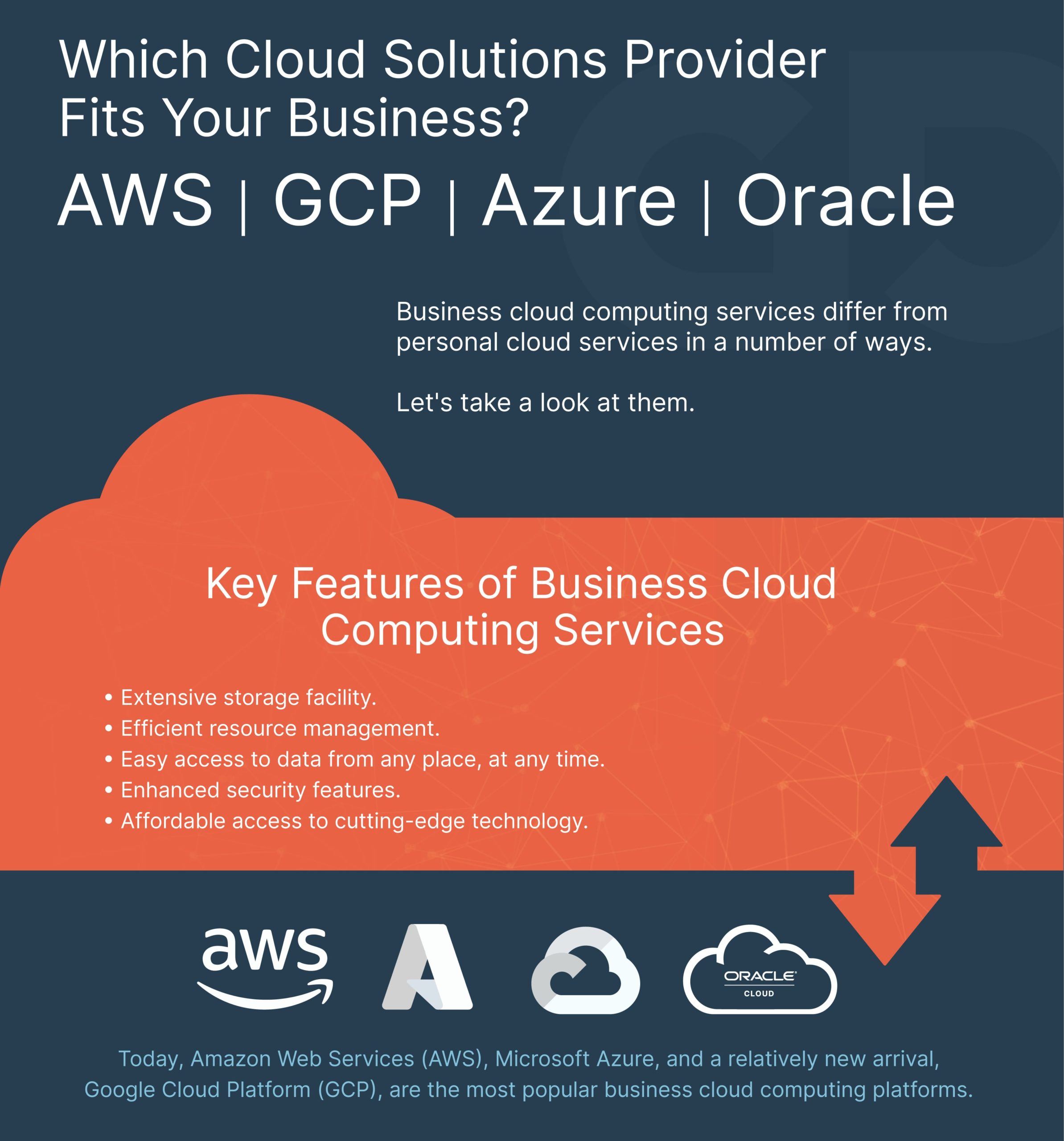
Meanwhile, Microsoft is particularly strong in SaaS, while Google Cloud, with its strength in artificial intelligence, is positioned for aggressive growth as the AI market grows – and is known for offering discounts.
Let’s take a closer look at the top cloud providers going into 2022.
AWS – Amazon Web Services
AWS being the first to offer true cloud services is the dominating provider. A subsidiary of Amazon and founded in 2006, AWS is a leader amongst cloud service providers. It is one of the first cloud computing platforms that became widely available. Amazon is an IaaS market leader, holding about 31% of the cloud market share. In 2020 the financial results for the entire year exceeded the company’s expectations. Some of this can be attributed to the massive need for cloud services as the pandemic took hold. AWS reported a revenue of $45 billion in 2020, which was almost 30% more than the revenue announced in 2019.
Amazon Web Services offers a broad set of global cloud-based products including compute, storage, databases, analytics, networking, mobile, developer tools, management tools, IoT, security and enterprise applications. These services help organizations move faster, lower IT costs, and scale. AWS is trusted by the largest enterprises and the hottest start-ups to power a wide variety of workloads including: web and mobile applications, game development, data processing and warehousing, storage, archive, and many others.

Where AWS is Strong – (Pros)
When it comes to Iaas and PaaS, AWS has the largest market share and leads in the vast majority of cloud products and services around the globe. A big reason for its popularity is undoubtedly the massive scope of its operations. AWS has a huge and growing array of available services, as well as the most comprehensive network of worldwide data centers. The Gartner report summed it up, saying, “AWS is the most mature, enterprise-ready provider, with the deepest capabilities for governing a large number of users and resources.”
The company has a strong managed service provider network, with 67 premier consulting partners worldwide. Enterprises perceive AWS as a strategic provider of cloud infrastructure. AWS delivers end-to-end solutions, starting from servers to embedded operating systems in Edge devices, and the comprehensive technological stack in between.
Where AWS is Weak – Cons
It is known that one of Amazon’s big weaknesses relates to cost. While AWS regularly lowers its prices, many enterprises find it difficult to understand the company’s cost structure and to manage those costs effectively when running a high volume of workloads on the service. At times Amazon has proclaimed price reductions, the price for some services, like the AWS Compute service, has not become cheaper since 2014. AWS optimizes their best cloud services, and if the customer is tied to the Amazon products, it may not be easy to switch to another service provider although the top 3 majors have made it easier to be friendly with each other in the past few years with cloud agnostic technology coming into favor.
AWS Benefits
Without a doubt, AWS is the most mature and enterprise-ready provider with a tremendous track record of customer success, starting from small and medium businesses to large enterprises. Enterprises using Amazon consistently benefit by being early adopters of new services. Amazon Web Services offers over 100 products that users can test for free. The company provides a set of database, developer and mobile tools and services that are always free. In addition, AWS offers a 1-year trial for certain products and short free trial services for ML, analytics, compute, security and compliance.
Microsoft Azure
Microsoft came later to the cloud market, but gave itself a jump start by essentially taking its on-premises software – Windows Server, Office, SQL Server, Sharepoint, Dynamics Active Directory, .Net, and others – and repurposing it for the cloud.
Microsoft Azure holds a strong second place after AWS. The company provides a broad range of enterprise-focused services. Every quarter Microsoft Azure releases tens of products, services and enhancements resulting from research and development initiatives, made over multiple years. Azure offers the ability to instantly provision computing resources on-demand and is the best-in-class in the hybrid cloud among other cloud vendors.
Microsoft Azure’s market share among IaaS cloud providers is 20%. In Q2 2021, Microsoft Azure’s revenue reached 50% growth when compared to the previous quarter, and resulted in $17 billion in earnings for the company. The accelerated demand for Microsoft Azure offerings has increased by 34% year over year, as stated in the company’s Q2 2021 financial report. Microsoft Enterprise Mobility (service including Microsoft products as Azure Active Directory, Endpoint Configuration Manager, Microsoft Intune, Microsoft Defender, etc.) grew 29% to 163 million seats in Q2 2021.
With over 600 services, Azure has a large layout of cloud offerings. Azure offers VMs as a part of its IaaS offering, Active Directory to synchronize on-premise directories, and enables single sign-on. The company also provides mobile engagement with real-time analytics and tracking of user behaviors and storage services, as well as data management tools such as Azure Data Explorer, Azure SQL Database, Serverless, CDN, Azure AI, Azure Workbench, Azure IoT and other services.
Where Microsoft Azure is Strong – Pros
A big reason for Azure’s success: so many enterprises deploy Windows and other Microsoft software. Because Azure is tightly integrated with these other applications, enterprises that use a lot of Microsoft software often find that it ]makes sense for them to use Azure. This builds loyalty for existing Microsoft customers. Also, if you are already an existing Microsoft enterprise customer, expect significant discounts on service contracts.
There are some good use cases for Azure due in part to the wide service offerings that Microsoft provides. Azure has partnerships with Oracle, VMware and SAP, further extending its capabilities. Microsoft Azure has a strong managed service provider network with 32 partners on its list. On top of that, Microsoft leads the PaaS segment of cloud service providers with a suite of tools, including Azure DevOps and Visual Studio Codespaces (the tool that enables the use of a public cloud and developer tools, such as Visual Studio Code).
Where Microsoft Azure is Weak – Cons
According to Gartner, there is fault with some of the platform’s imperfections. “While Microsoft Azure is an enterprise-ready platform, Gartner clients report that the service experience feels less enterprise-ready than they expected, given Microsoft’s long history as an enterprise vendor,” it said. “Customers cite issues with technical support, documentation, training, and breadth of the ISV partner ecosystem.” These are issues that Microsoft has been trying to improve upon nevertheless customers are still mentioning these issues.
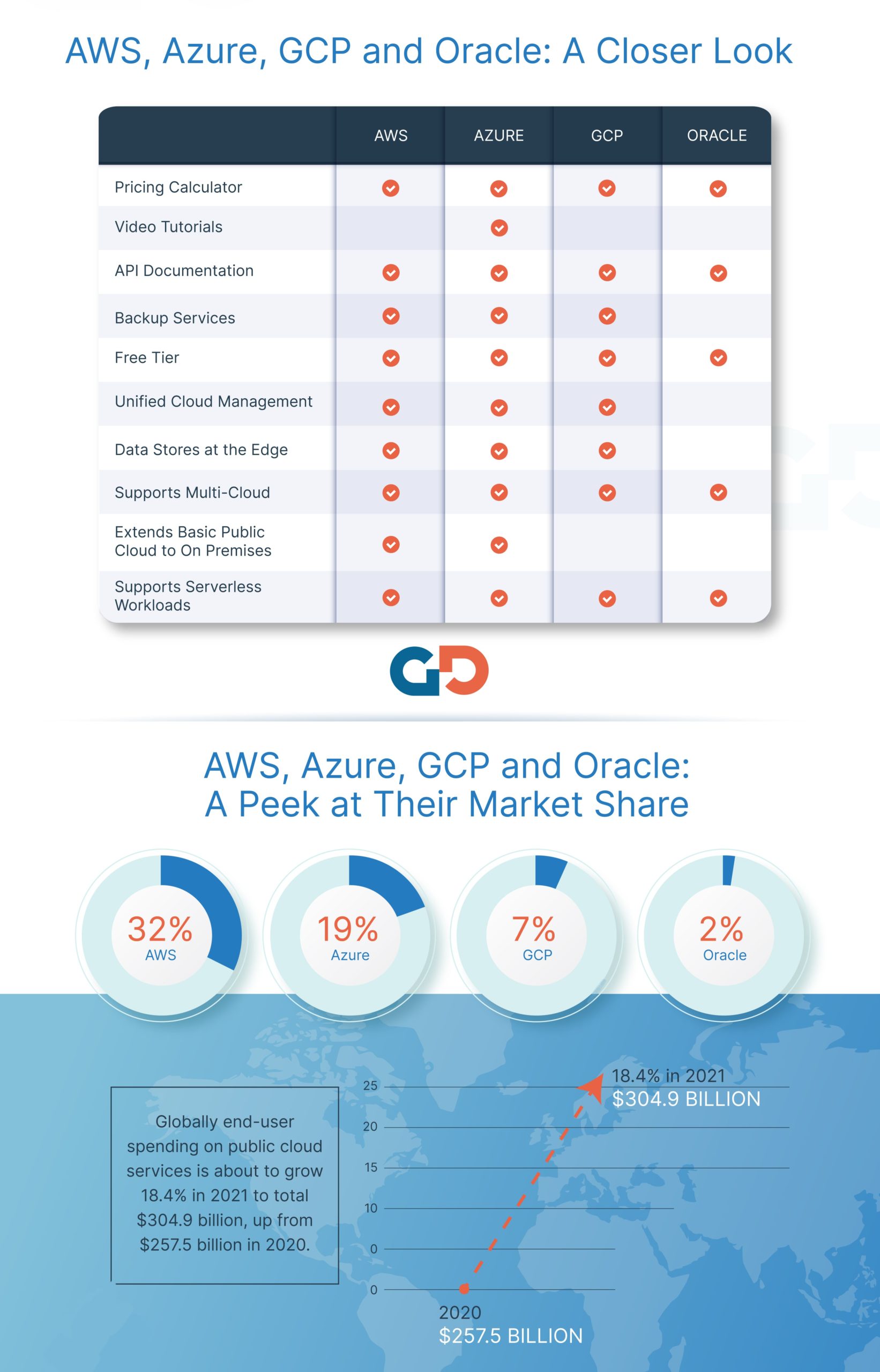
Microsoft support is quite expensive. In addition, Microsoft Azure has a lower ratio of availability zones than other cloud service providers. There’s still room for resilience-centered reengineering efforts and service availability improvements though. On top of that, Azure doesn’t provide any form of guaranteed capacity to its customers, and even pre-paid contracts and reserved instances are not capacity guarantees. During the COVID-19 spike, some Microsoft Azure customers were not able to provision the cloud capacity they had already paid for. There is where AWS outshined its competitors.
Azure Benefits
Azure is particularly well suited for organizations using Microsoft services. Microsoft Azure provides consistent services on the cloud and is a strong player in all use cases. This includes edge and comprehensive cloud offerings, in which other cloud vendors are not that well-versed. Microsoft Azure offers a $200 credit for 30 days to new users. As mentioned earlier, Azure offers the ability to instantly provision computing resources on-demand and is the best-in-class in the hybrid cloud among other cloud vendors.
Google Cloud Platform (GCP)
Google Cloud has third place on Gartner’s Magic Quadrant of cloud providers, after AWS and Microsoft Azure. In the last year, Google Cloud has substantially increased its hybrid and multi-cloud workload using Antos which allows users to manage workloads on Google, AWS and Azure. Besides, Firebase, a Google-purchased cloud mobile Backend-as-a-Service (BaaS), has grown quite rapidly and became widely adopted by developers. Firebase remains a highly-demanded BaaS platform despite it being run on the top of Google Cloud.
The market share of Google Cloud in infrastructure, as a service market, is 7%. In 2020 Google was investing heavily in sales staff, resulting in an operating loss of $5 billion and an overall $13 billion revenue. However, these steps were needed to scale the business and improve its profitability.
The Google Cloud platform offers 100 products that can be grouped into six categories: storage, databases, computing and hosting (servers, containers VMs), networking (VPC, load balancing, cloud DNS), big data (Big Query for data analysis, Dataflow for batch and streaming data processing), and machine learning (AI platform).
Where Google Cloud is strong – Pros
Google Cloud stands out in big data, machine learning and data science capabilities with its products like TensorFlow, ML Kit and Google Datasets. It offers an end-to-end AI platform built on the latest technologies and is enabled by tools like TensorFlow and TPUs (Tensor Processing Unit – an AI accelerator application-specific integrated circuit).
Google has a strong offering in containers since Google developed the Kubernetes standard that AWS and Azure now offer. GCP specializes in high compute offerings like Big Data, analytics, and machine learning. It also offers considerable scale and load balancing – Google knows data centers and fast response time.
Where Google Cloud is weak – Cons
Google has challenges with positioning itself as an enterprise-class IaaS solution. Its offerings have not yet reached the level of enterprise maturity that AWS and Microsoft Azure provide, and some of them are not yet as fully packaged as the ones offered by Google Cloud’s rivals. Likewise, Google Cloud has a smaller pool of well-versed managed service providers than other cloud vendors. Google is a distant third in market share, perhaps because it doesn’t have the traditional relationship with enterprise customers. However, it is quickly expanding both its offerings and its footprint of global data centers.
Gartner said that its “clients typically choose GCP as a secondary provider rather than a strategic provider, though GCP is increasingly chosen as a strategic alternative to AWS by customers whose businesses compete with Amazon, and that are more open-source-centric or DevOps-centric, and thus are less well-aligned to Microsoft Azure.”
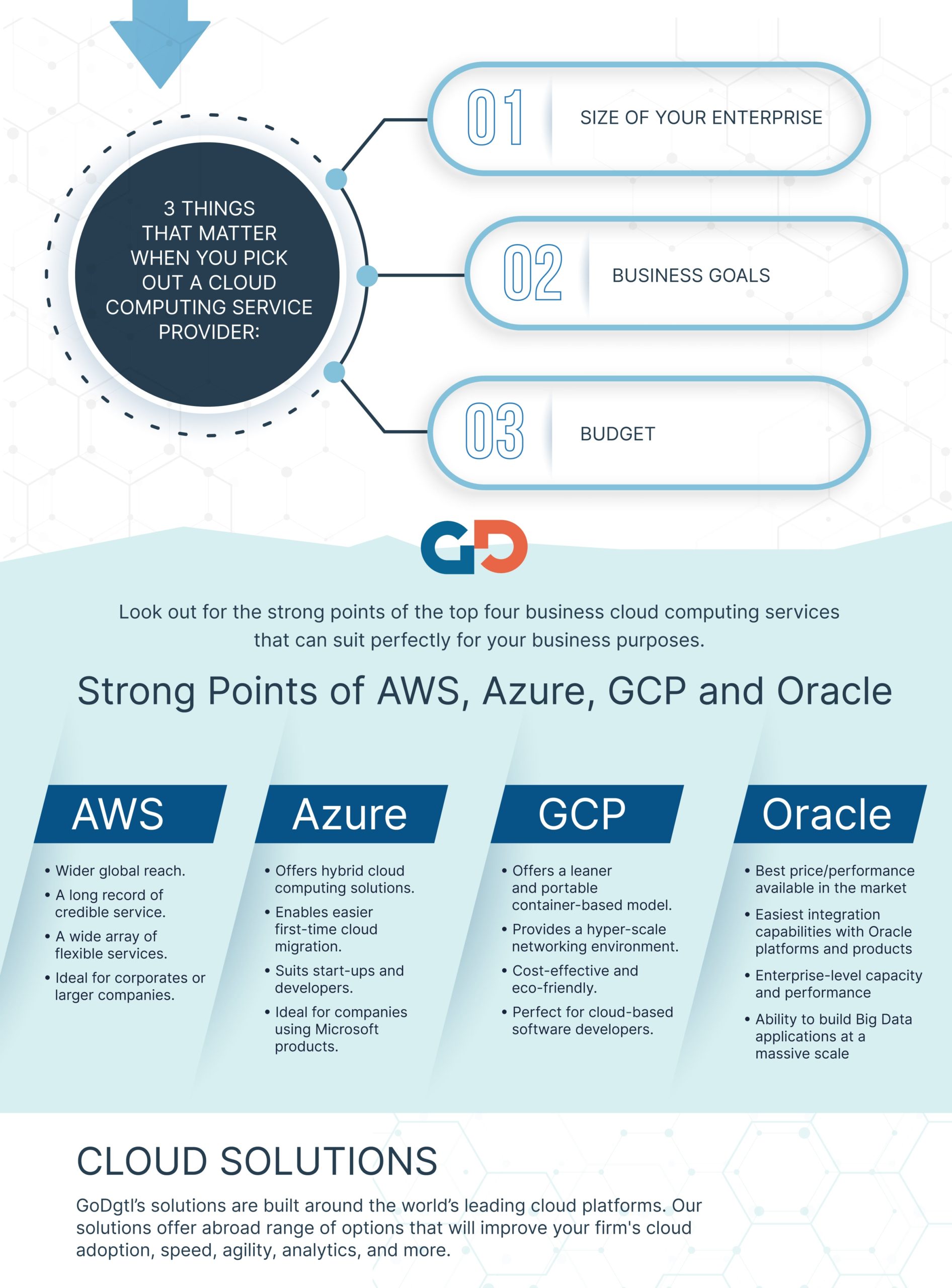
Google Cloud Benefits
Research shows that Google Cloud customers don’t need to be afraid of the vendor lock-in since the main Google offerings are open source (Kubernetes, TensorFlow and Istio) which eventually became industry standards. These services have significantly influenced the deployment, scaling and management of enterprise IT in the cloud. As the cloud industry and platforms evolve towards cloud agnostic offerings, Google is increasing, though slowly, its market footprint every year by convincing customers with its enterprise cloud offerings which are starting to stand up to industry standards in a convincing way.
Where Are the Trends Going into 2022?
According to predictions from Gartner, global spending on cloud services is expected to reach over $482 billion in 2022, up from $313 billion in 2020. Cloud computing infrastructure is the backbone of the delivery pipeline of just about every digital service, from social media and streaming entertainment to connected cars and autonomous internet of things (IoT) infrastructure. New or upcoming ultra-fast networks like 5G and Wi-Fi 6E don’t just mean more data will be streamed from the cloud; they mean new types of data can be streamed.
The pandemic brought about an explosion in cloud usage for employee remote services and those trends will continue to evolve and enterprise migrations will become more focused and projects will begin to use hybrid cloud. The distinction between public and private cloud will become less as options for ‘best of both worlds’ start to become frequent offerings.
How GoDgtl Partners with AWS, Azure, and Google Cloud Services
GoDgtl brings a team of experienced cloud experts who work directly with AWS, Azure, and Google to bring value and real solutions for your cloud projects. With direct access to resources and in-house cloud consulting talent, GoDgtl is ready to guide you through your cloud (security) journey regardless of where you are on that path. Whether it’s more knowledge-based information on cloud topics such as security, or governance and compliance or basic cloud migration aspects or even if an assessment is needed, GoDgtl can provide a roadmap for your path to project completion and success.
Sources:
https://www.avenga.com/magazine/top-cloud-service-providers/
https://www.datamation.com/cloud/aws-vs-azure-vs-google-cloud/
Recent Posts
February, 2022




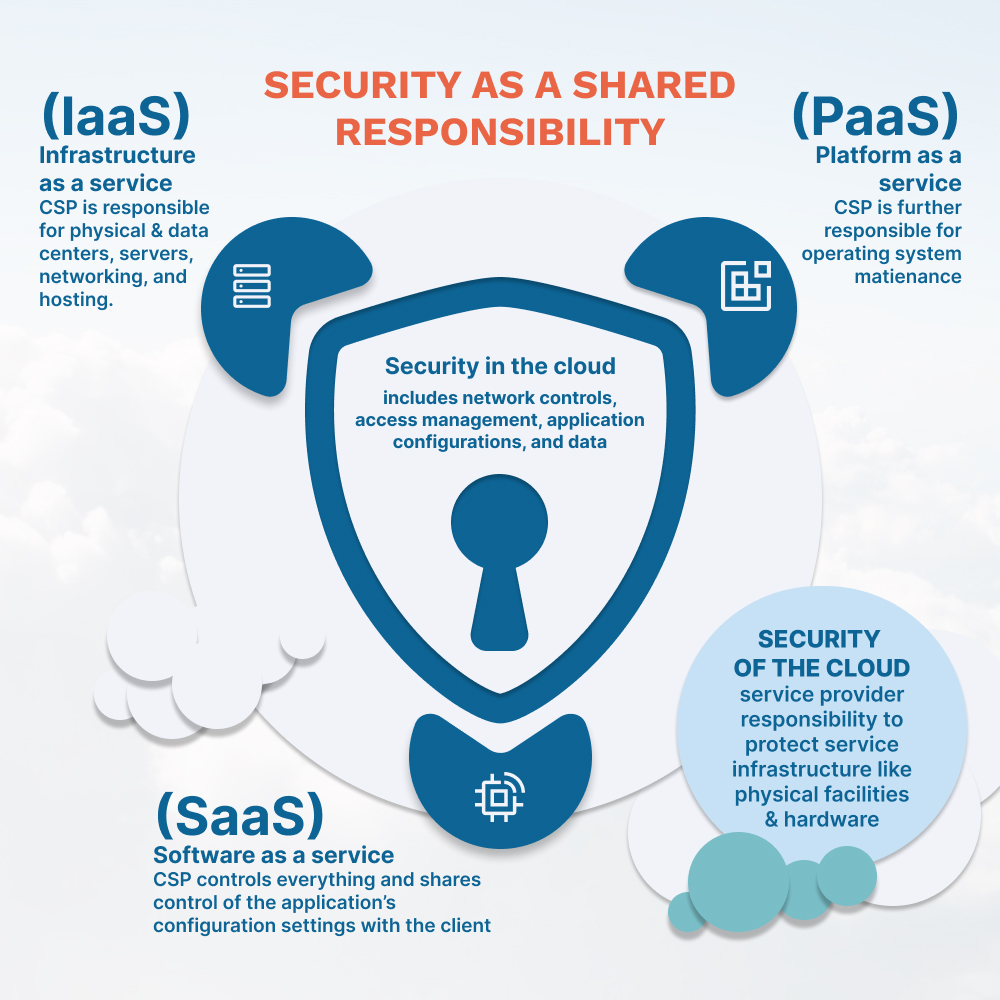

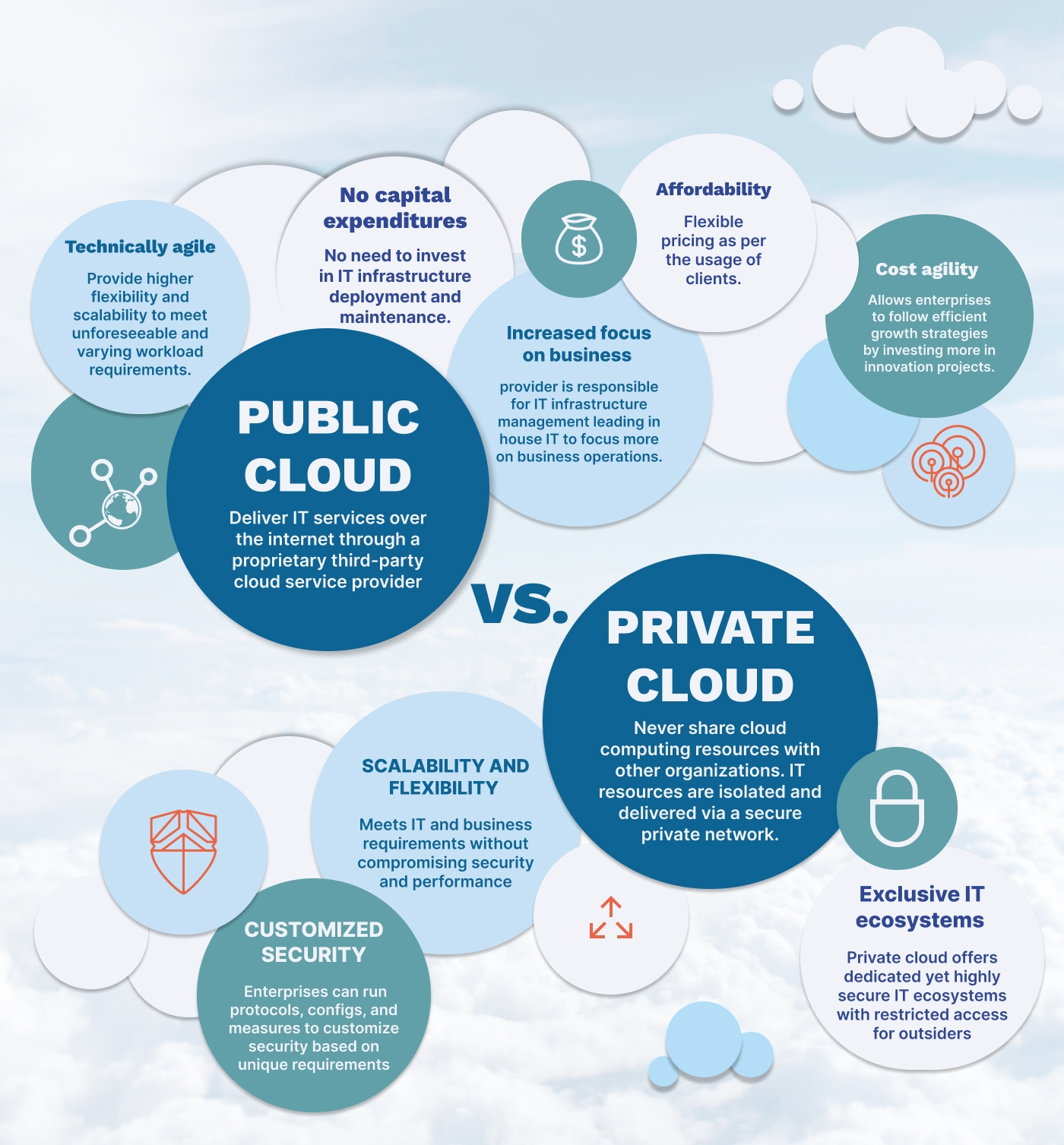

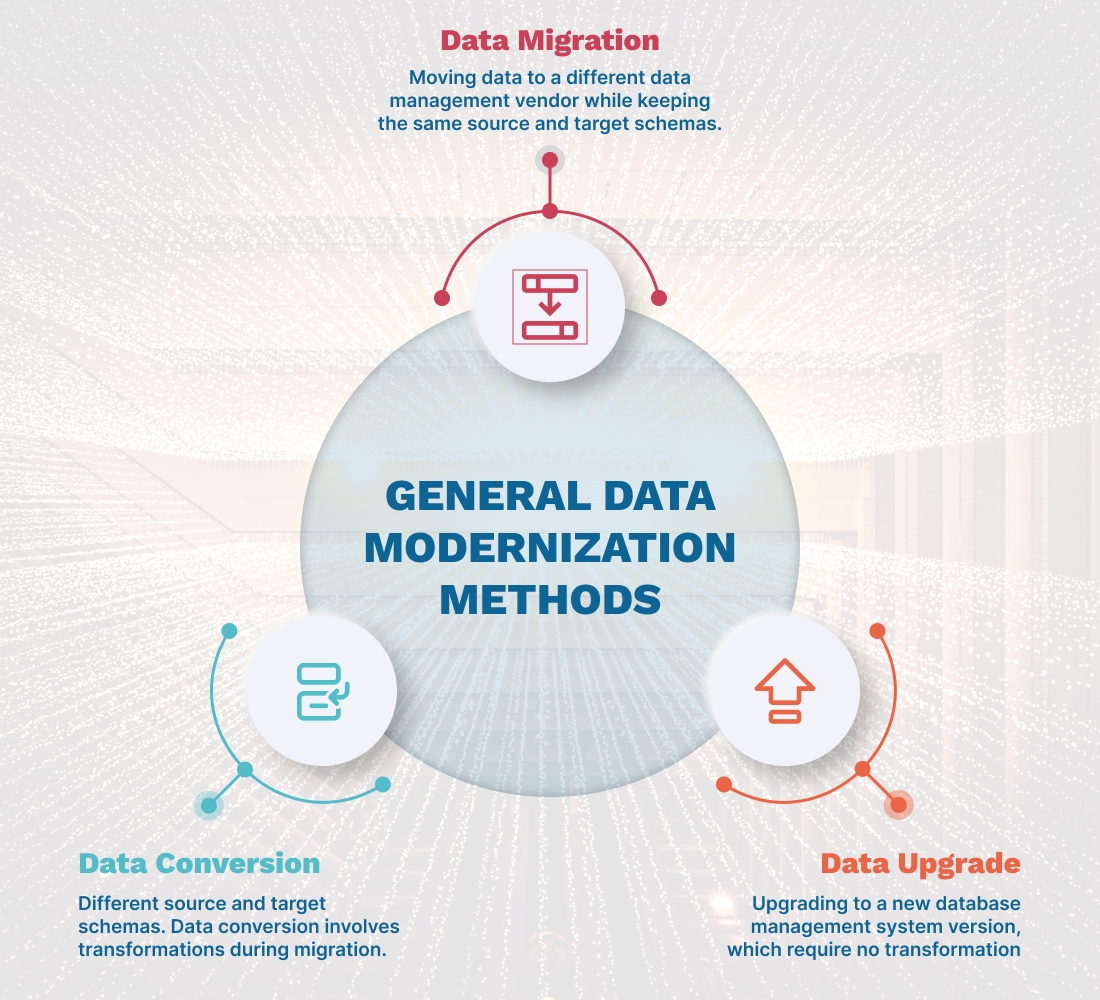 The Benefits of Data Modernization
The Benefits of Data Modernization

